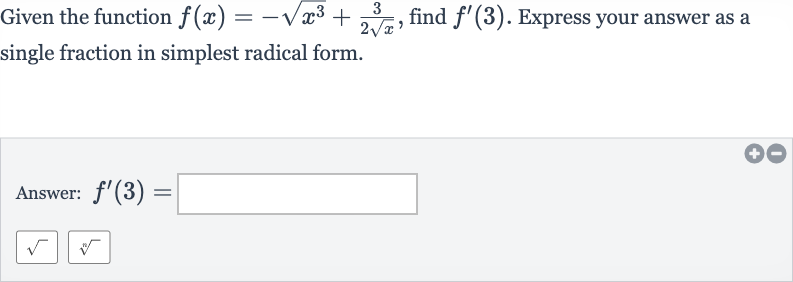AI tutor
Welcome to Bytelearn!
Let’s check out your problem:

Given the function , find . Express your answer as a single fraction in simplest radical form.Answer:
Full solution
Q. Given the function , find . Express your answer as a single fraction in simplest radical form.Answer:
- Find Derivative of : First, we need to find the derivative of the function . To do this, we will use the power rule and the chain rule for derivatives.Let's differentiate each term separately.
- Apply Power Rule: For the first term , we apply the power rule which states that the derivative of is . The derivative of is .
- Combine Derivatives: For the second term , we also apply the power rule. The derivative of is .The derivative of is .
- Evaluate at : Now, we combine the derivatives of both terms to get the derivative of the entire function .
- Simplify Powers of : Next, we need to evaluate the derivative at .
- Substitute Values: We simplify the expression by calculating the powers of . is the square root of , which we can write as . is over the square root of cubed, which simplifies to .
- Perform Multiplication and Division: Now we substitute these values into the derivative.
- Find Common Denominator: We simplify the expression by performing the multiplication and division.
- Combine Numerators: To combine these terms into a single fraction, we need a common denominator. The common denominator will be .
- Simplify Numerator: Now we can combine the numerators over the common denominator.
- Simplify Numerator: Now we can combine the numerators over the common denominator.Finally, we simplify the numerator.This is the derivative of the function at in simplest radical form.
